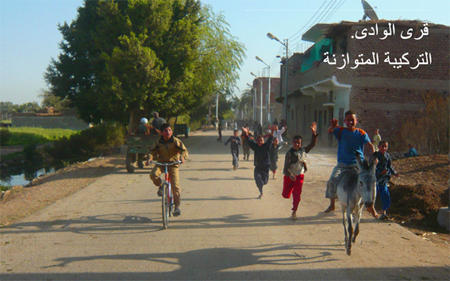Villages in the Nile Valley - A stable constellation

Students: Liisa Gunnarsson, Mirco Brugnoli
Densities of habitation in Egypt are very high by international standards - overall rural population densities can exceed 2’000 persons per square kilometre. By comparison, the density of the Greater Metropolitan Area of Los Angeles is only 1’029 persons per square kilometre. Such indicators point to the great paradox of Egyptian countryside – an enormous amount of population is bound to the limited resources of land and the self-sustaining ways of life, while they lacks infrastructures and services that urban region of comparable or even much lesser densities would have. This observation brings us to the key question underlying this investigation – are we looking at a formation of a new and specific type of urbanisation, to ‘rural cities’?
There are several specific and unique features of Egyptian villages that support and enable their explosive growth. The villages sustain themselves through a smallholder agricultural production – in rural Upper Egypt (including the area of Assiut) the staggering 82% of households have less than 1.2 hectares of land. The density of village agglomerations is striking. The villages are structured like small towns with narrow alleyways and houses for multigenerational families that can have five or even more stories. Another unique feature of Egypt’s rural population patterns are the short distances and the reasonably good transportation systems, which bind the settlements in the Valley into an intricate linear network. No village is more than a few kilometres from a sizeable town, and movements between them are quite efficient.
The growth and expansion of villages into agricultural land was unleashed by the construction of Aswan dam in early ‘70s when flooding of the Nile valley was permanently put under control. Only in recent years, the danger of this kind of urbanization and the rapid land consumption has been recognized, and the government is trying to place hard restrictions on the growth of villages in the future.
Migrations are also an interesting and important aspect of growth of Egyptian towns and villages – while the earlier decades were characterized by a mass exodus from rural to urban areas, the situation today is completely reversed. There is now a considerable overspill of urban centres into rural hinterlands, combined with hundreds of emerging village-towns in rural governorates. Much of the growth present in villages is also generated internally, by the simple growth of families, which construct and expand their houses by themselves slowly and gradually, to accommodate new family members.

